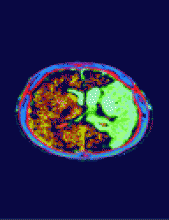Transient ischemic attack (TIA) has long been recognized by stroke investigators as both an immediate and a long-term precursor of stroke. Fisher, writing in 1951 about a series of stroke patients, noted the presence of “transitory attacks before the major stroke … commonly occurring once or twice in the preceding week or month.”1 In 1964, Marshall reported that nearly half of stroke patients who had experienced TIAs beforehand had their stroke in the subsequent month. He commented: “The appearance of TIAs … is clearly a serious matter and the decision as to what investigation and treatment should be carried out is a matter of some urgency.”2
Other early studies of patients presenting with TIAs reported a significant short-term risk of stroke. In 1974, Whisnant calculated a 7.6% risk of stroke within 1 month after a TIA.3 Data subsequently published in 1987 by Whisnant and colleagues suggested a stroke risk of 5% within the first 5 days after a TIA.4 In a 1978 study, 40% of patients with a single TIA had a stroke within 1 month.5 About 10 years later, 2 studies demonstrated a 9% risk of stroke within 6 days after a TIA,6 and a 4.4% risk at 30 days.7 The authors of these 2 studies respectively concluded that “patients with recent TIAs are at high risk for … brain infarction” and that “[t]he risk of stroke is greater immediately after TIA, which has important implications for clinical practice.” The authors of the latter study recently recalculated the risk of stroke at 5% within 2 days after a TIA,8 identical to the risk reported in another recent publication.9 Still another recent report showed a 30-day risk of stroke of 9.2% after TIA.10
Two studies published in this issue of CMAJ add robust data to the previous reports concerning the early risk of stroke following TIA. In one, Gladstone and colleagues examined data collected in a multicentre registry of patients with an emergency department diagnosis of TIA or stroke (page 1099).11 They report a 2- and 90-day risk of stroke following a TIA of 3% and 6% respectively. They found that clinical features similar to those previously reported9 were predictors of an increased risk of stroke and death. In addition, the authors found that, compared with the stroke patients, those with TIAs received significantly less testing and treatment, a finding similar to that reported by others.9,12,13
In the other study (page 1105), Eliasziw and colleagues14 analyzed data collected in the medical arm of the landmark NASCET trial of symptomatic carotid stenosis.15 Starting from the first occurrence of a hemispheric TIA or stroke in the 180 days before enrolment in NASCET, they calculated the risk of a subsequent stroke in the territory of the symptomatic carotid artery. They report the 2- and 90-day risk following a TIA to be 5.5% and 20% respectively, much higher than the observed risk following an initial stroke, as previously reported.16,17 Their data did not confirm a higher risk of stroke associated with certain clinical features reported by others.9,11
The composite of old and recent data leaves little doubt of the significant short-term risk following a TIA. Despite these consistently alarming reports, TIAs continue to be underinvestigated and undertreated.9,12,13Lack of appreciation of this risk may result from limited educational efforts targeting the professional and lay populations. These limited efforts, in turn, may result from the low prevalence of TIA in the overall population (1.1%–6.3%)18,19 compared with the high prevalence of other major risk factors such as hypertension.20 Thus, although the risk of stroke shortly after TIA is increased 12-fold,21 the attributable risk in the overall population is modest, perhaps about 10%, and much lower than the 70% attributed to hypertension.22,23 This has led some researchers to comment that “from a public health point of view the early detection and treatment of patients with transient ischaemic attacks would not be a major priority in any community stroke prevention programme.”23 This view, however, does not consider that the incidence and prevalence of TIAs increase with age18,19,24 and that the risk of stroke following a TIA may also increase with age,9 which leads to an increasing attributable risk in the older population. Conversely, the attributable risk due to hypertension decreases steadily with age and eventually reaches zero.20 Therefore, the risk attributed to TIA will exceed that attributed to hypertension among elderly patients, who are at highest risk for stroke. A similar relation holds for atrial fibrillation, a widely recognized risk factor for stroke.20 TIAs may represent a major, underappreciated risk factor for stroke in an aging population. Robust analyses of attributable risk due to TIAs as a function of age should be the subject of future research, as should the continued search for short-term treatments to prevent stroke.4,6
Footnotes
Competing interests: None declared.
Correspondence to: Dr. Piero Verro, University of California, Davis Medical Center, 2315 Stockton Blvd., Rm. 5308, Sacramento CA 95817, USA; fax 916 736-2976; piero.verro{at}ucdmc.ucdavis.edu











